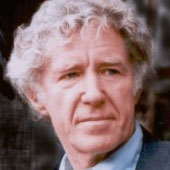1942 and the Global Battle for the Environment
Can the United States restructure its economy to better address severe environmental concerns?
May 3, 2006
The good news is that we have the technologies needed to build the new economy. We can see the Plan B economy emerging in the wind farms of western Europe, the solar rooftops of Japan, the growing fleet of gas-electric hybrid cars in the United States, the reforested mountains of South Korea and the bicycle friendly streets of Amsterdam.
The bad news is that we do not have much time. As we contemplate the rapid restructuring needed, it is both instructive and encouraging to look at the U.S. restructuring for World War II.
Initially, the United States resisted involvement in the war and responded only after it was directly attacked at Pearl Harbor on December 7, 1941.
But respond it did. After an all-out commitment, the U.S. engagement helped turn the tide, leading the Allied Forces to victory within three-and-a-half years.
In his State of the Union address on January 6, 1942, one month after the bombing of Pearl Harbor, President Roosevelt announced the country's arms production goals.
The United States, he said, was planning to produce 45,000 tanks, 60,000 planes, 20,000 anti-aircraft guns and 6 million tons of merchant shipping.
No one had ever seen such huge arms production numbers. But Roosevelt and his colleagues realized that the largest concentration of industrial power in the world at that time was in the U.S. automobile industry. Even during the Depression, the United States was producing three million cars a year.
After his State of the Union address, Roosevelt met with automobile industry leaders and told them that the country would rely heavily on them to reach these arms production goals.
Initially, they wanted to continue making cars and simply add on the production of armaments. What they did not yet know was that the sale of private automobiles would soon be banned. From the beginning of April 1942 through the end of 1944, nearly three years, there were essentially no cars produced in the United States.
In addition to a ban on the production and sale of cars for private use, residential and highway construction was halted — and driving for pleasure was banned. A rationing program was also introduced.
Strategic goods — including tires, gasoline, fuel oil and sugar — were rationed beginning in 1942. Cutting back on consumption of these goods freed up material resources to support the war effort.
The year 1942 witnessed the greatest expansion of industrial output in the nation's history — all for military use. Wartime aircraft needs were enormous. They included not only fighters, bombers and reconnaissance planes, but also the troop and cargo transports needed to fight a war on two distant fronts.
From the beginning of 1942 through 1944, the United States far exceeded the initial goal of 60,000 planes, turning out 229,600 aircraft, a fleet so vast it is hard even today to visualize it. Equally impressive, by the end of the war more than 5,000 ships were added to the 1,000 or so that made up the American Merchant Fleet in 1939.
In her book "No Ordinary Time," Doris Kearns Goodwin describes how various firms converted to wartime production. A sparkplug factory was among the first to switch to the production of machine guns.
Soon a manufacturer of stoves was producing lifeboats. A merry-go-round factory was making gun mounts; a toy company was turning out compasses; a corset manufacturer was producing grenade belts — and a pinball machine plant began to make armor-piercing shells.
In retrospect, the speed of this conversion from a peacetime to a wartime economy is stunning. The harnessing of U.S. industrial power tipped the scales decisively toward the Allied Forces, reversing the tide of war.
Germany and Japan, already fully extended, could not counter this effort. To explain the turnaround, Winston Churchill often quoted his foreign secretary, Sir Edward Grey: "The United States is like a giant boiler. Once the fire is lighted under it, there is no limit to the power it can generate."
This mobilization of resources within a matter of months demonstrates that a country — and, indeed, the world — can restructure the economy quickly if it is convinced of the need to do so.
In this mobilization, the scarcest resource of all is time. With climate change, for example, we are fast approaching the point of no return. The temptation is to reset the clock, but we cannot. Nature is the timekeeper.
The question facing governments is whether they can respond quickly enough to prevent threats from becoming catastrophes. The world has precious little experience in responding to aquifer depletion, rising temperatures, expanding deserts, melting polar ice caps and a shrinking oil supply.
These trends are fully challenging the capacity of our political institutions and leaders. In times of crisis, societies sometimes have a Nero as a leader and sometimes a Churchill.
Leadership, like time, is a scarce resource. History judges political leaders by whether or not they respond to the great issues of their time.
For today's leaders, that issue is how to move the global economy onto an environmentally sound path. We need a national political leader to step forward, an environmental Churchill, to rally the world around this effort.
Read previous
Getting Married in Burkina Faso
May 2, 2006
